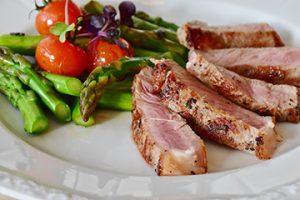 If you’re exercising with others, you’ve probably heard of the many protein supplements or foods that boost your protein intake. While it’s true that active people need more protein than sedentary ones, there is a limit on how much you should consume. Consuming too much protein can have consequences and limit your intake of other foods with nutrients necessary for good health. You require the right mix of macronutrients, protein, fats, and carbohydrates. The protein requirement also varies by gender, age, and activity level.
If you’re exercising with others, you’ve probably heard of the many protein supplements or foods that boost your protein intake. While it’s true that active people need more protein than sedentary ones, there is a limit on how much you should consume. Consuming too much protein can have consequences and limit your intake of other foods with nutrients necessary for good health. You require the right mix of macronutrients, protein, fats, and carbohydrates. The protein requirement also varies by gender, age, and activity level.
You’re an individual with special needs.
There’s not one right amount of protein for every person. Even your total calorie intake will determine how much you should have. People on a 2000-calorie diet for weight maintenance should have 10 to 35% of their calories from protein. If they’re active, that percentage will be higher. Additional protein is necessary to help mend and build muscle tissue. Sedentary people require a gram of protein for every 2.2 pounds they weigh. That gram grows to 1.3 grams if the same person is active and escalates to 1.6 grams if they’re an athlete.
Your weight, age, and gender also determine the amount of protein you require.
Women have less muscle mass than men do, so their need for extra protein isn’t as great. Since the amount of protein you require is based on weight it affects the requirement by gender, since women generally weigh less than men. Protein isn’t as bioavailable to older people, so they need more. To get the same benefit from protein as they did when they were younger, it takes more protein at a time when appetite is often less.
Some types of protein are more beneficial than others.
Protein is created from amino acids. Nine of them are essential. Essential amino acids are ones the body can’t make so they have to come from food. Animal products contain complete proteins, meaning they have all nine essential amino acids. Not all plant-based proteins are complete. That doesn’t necessarily mean they’re inferior, but it does mean you have to be more careful when you’re planning menus. You can combine plant protein to get all 9 amino acids and create a menu with complete proteins. A chicken breast is a far healthier source of protein than processed meat or a poor-quality protein powder.
- If you love beef but want the healthiest source of protein, consider beef and animal products from pastured animals rather than grain-fed animals. Pastured eggs are also more beneficial.
- Protein is used in the creation of enzymes that cause biological reactions, such as creating connective tissue, boosting the immune system, building and repairing muscle, and providing energy.
- Eating high amounts of protein for extended periods can damage the liver and kidneys. It’s hard to do if you’re using whole foods and not protein supplements. For a 220-pound person, that would mean eating 200 grams, the equivalent of 1 ½ pounds of steak or eight 3-ounce hamburgers daily.
- Consuming a carbohydrate and protein snack after a workout can help speed recovery. It provides the energy and nutrition to repair and build muscle tissue.
For more information, contact us today at Next Level Fitness
